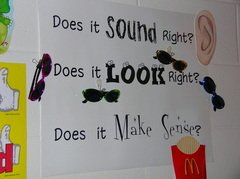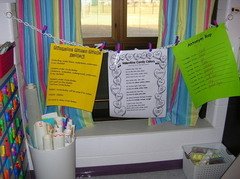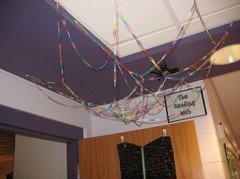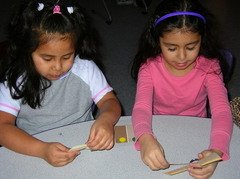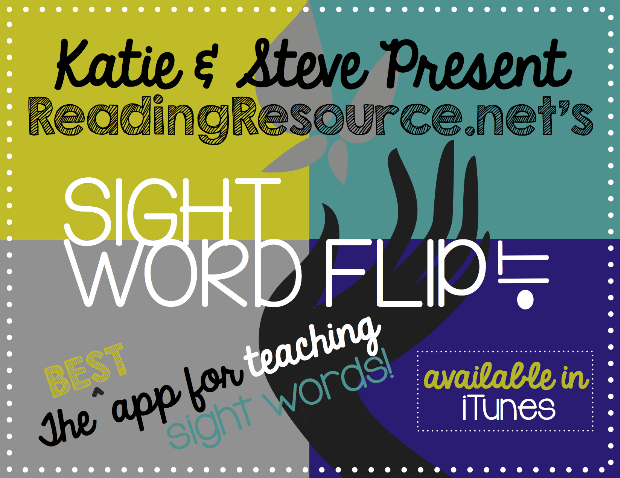READING FLUENCY ACTIVITIES
Free PRINTABLE DOWNLOADS & RESOURCES
The reading fluency activities on this page are essential for children with dyslexia and struggling readers. These activities can be taught in the classroom (small and large group setting) and can also be implemented at home! Keep checking this page for more free printable reading fluency activities and other ways to increase reading fluency!
READING FLUENCY ACTIVITIES: CLASSROOM THAT SUPPORT READING FLUENCY
Reading Self-Check Poster
By enlarging this template you can help students learn and remember important self-check strategies when reading. We have found that it is beneficial to add objects to each strategy!
Words Per Minute Partner Read
Increase a child's reading fluency at the word level while they take turns "reading" and being the "listener". Open the above template for complete directions and materials needed. This is a great activity for reading centers!
Fluency With Punctuation
Print and cut apart the strips to help children practice punctuation fluency by using letters of the alphabet.
Repeated Reading Homework Log
Use this parent friendly homework log to help your students practice reading fluency using the repeated reading method at home. Repeated Reading is one of our favorite reading fluency activities because it is so effective.
Prefixes and Suffixes
Help children understand and recognize common prefixes and suffixes by cutting out and laminating the above cards. Provide children with opportunities to locate these in words. Reading fluency activities that explicitly teach prefixes and suffixes are important for increasing reading fluency.
Buddy Reading
Using the same premise as mentioned on the Reading Fluency Page in "Repeated Readings", students can receive feedback and guidance reading appropriate text from their peers. One student plays the "reader" and the other is the "listener". The teacher sets a timer for a desired amount of time and after the first trial, the listener provides feedback to the reader. After the second and third trials, the listener is responsible for checking off the reading behaviors that the reader demonstrated. NOTE: This reading fluency activity must be explicitly modeled by the teacher before students can do this independently.
Reader's Theater
Reader’s Theater helps students become fluent readers! The repeated readings necessary to prepare for play, both silent and oral, help students gain confidence with the selected play text. Choral readings, rehearsals, and readings at home with family members all create great reading opportunities. (Carson-Dellosa’s “Act It Out with Reader’s Theater” Series are great because the speaking parts in each play can be acted with students at different reading levels).
Poetry Anthologies
When reading rhyming poetry, children may use the predictable patterns to help them get a sense of when it is appropriate to pause between phrases. Rhyming poetry appeals to children of all ages, and is therefore a good choice for developing reading fluency from kindergarten through fifth grade. For more information about rhyming, go to the Phonemic Awareness Activities Page.
Read the Room
Students should be given opportunities to practice reading fluency with letters, words, and phrases that can be found in the classroom. (Not just the print found in books!) During reading centers, students are able to walk around independently to “read the room”. Pocket charts and hanging posters are located throughout and are kept at eye level. Empty laundry baskets are great places to keep rolled up poems and songs previously learned.
Fluency Phrases
One of children's favorite reading fluency activities are practicing with short phrases. Repeated reading of phrases gives students practice reading decodable and non-decodable words with fluency. The short phrases may be written on sentence strips for the small group setting or used for a reading center activity. Click on the following links to print off these short phrases:
- Short Fluency Phrases (First 100 Words)
- Short Fluency Phrases (Second 100 Words)
- Short Fluency Phrases (Third 100 Words)
People Reading
Print, cut, and laminate the "People Reading" cards. Using the "Short Fluency Phrases" located above, have students pull out a "people" card. They must read the short phrase to represent the person that was drawn. Have the student pull out 2-3 more "people" cards to use with the same short phrase. Our kids love reading fluency activities like this!
Lego Fluency Cards
Print, laminate and place these cards with the "Short Fluency Phrases" used above. Purchase one Lego set for each child that will be reading and have a stopwatch handy. The idea of this game is to to finish your Lego creation before anyone else does! ("Lego Bionicles" seem to work best and they only have 30-50 pieces. Check the Lego sets for the appropriate age of the children you are working with!)
How to Play:
- When a child reads a "Short Fluency Phrase" correctly (with good expression too!) they get to take one piece to make their creation. A child can also add 4 Legos if they pull out the, "Add 4 Legos to Your Creation" card or if they pull out the, "One Minute to Work" card.
- If someone pulls out the, "Take a Lego Away From a Partner" card, they must take a Lego away from their partner. If someone has taken your Lego from you, the only way to get it back to to pull out a "Add 4 Legos to Your Creation" card!
- This game might take a while if played until someone has finished their Lego creation. If you are working with a small group of children, a good idea would be to place finished Legos in a plastic bag until another day when the game can resume.
The Reading Web (Page 1) and The Reading Web (Page 2)
The above documents are used to encourage reading at home. Students are given a form to take home (on a needed basis). A list of the books read is written down, along with how the book was read. Students are encouraged to read any of the following six ways: Independently, with a parent, shared, paired, choral, and/or echo reading. A paper clip is linked together (to form 'The Reading Web') for each book that is read at home. The more books that are read at home, the bigger the web gets!
Oh! No Game
On small cards, write some common decodable and non-decodable words depending upon the needs of your students. Place these in a container along with 10-15 cards that say, "Oh No!" Have students read each card as they pull them out. If they are read correctly, the student gets to keep them. When an "Oh No!" card is pulled out, the child must put all of their cards back in the container. The student with the most cards at the end of the game is the winner.
Ring Words Template
Each day students practice 5-10 words that are kept on a metal ring. Words are chosen for each student by the teacher. When the student is able to successfully read the word without any help, a tally mark is given. Once ten tallies are on a word card, it is taken off. Students have a special binder labeled, “Words I Can Read”. Ring Words that are taken off are written down in this binder and then glued on the above template to take home to share with their families. Students get very excited when they are able to take their words home!
Return from Reading Fluency Activities Page to Reading Fluency Page
